Recycled Ceramics: How to Breathe New Life into Old Pottery
Have you ever looked at a chipped mug or a cracked plate and thought, “What a shame!”? Well, it’s time to change that perspective! Recycling ceramics isn't just about throwing away old pottery; it's about breathing new life into these forgotten treasures. In this article, we will explore innovative methods for recycling ceramics, the benefits of repurposing old pottery, and creative projects that can transform discarded items into beautiful, functional art pieces. So, grab your old ceramics and let’s dive into the world of recycling!
Understanding why recycling ceramics is essential for sustainability can inspire individuals and communities to take action. Did you know that ceramics are one of the most challenging materials to recycle? This is because they don’t break down easily in landfills. By recycling ceramics, we can significantly reduce waste and promote environmental conservation. Here are a few reasons why recycling ceramics is crucial:
- Minimizes landfill use: By repurposing ceramics, we keep them out of landfills where they would otherwise contribute to environmental degradation.
- Conserves resources: Recycling ceramics means we use fewer raw materials to create new products, which helps conserve energy and resources.
- Encourages creativity: Finding new uses for old pottery sparks creativity and innovation, leading to unique art and functional pieces.
Various methods exist for recycling ceramics, from crushing and reusing materials to creating new items. Each technique offers unique benefits and can be tailored to specific projects or artistic visions. Let’s explore some of these methods in detail.
One of the most exciting ways to recycle ceramics is by crushing old pieces into smaller fragments. This technique allows for their incorporation into new projects, such as mosaics or garden paths. Imagine transforming those broken dishes into stunning art pieces! Not only does this method reduce waste, but it also adds texture and character to new creations. The resulting pieces can be used in various applications, making them both functional and aesthetically pleasing.
Mosaic art is a beautiful way to recycle ceramics. By assembling broken pieces into intricate designs, artists can transform discarded pottery into stunning visual displays for homes or public spaces. This method not only showcases creativity but also tells a story of renewal. Whether it’s a vibrant garden bench or a decorative wall piece, mosaic art can add a splash of color and personality to any space.
Using crushed ceramics in garden pathways or decor can enhance outdoor spaces. Imagine walking through a garden adorned with colorful ceramic fragments that catch the sunlight. This sustainable approach not only adds visual interest but also promotes eco-friendly practices in landscaping and gardening. Plus, it’s a fantastic conversation starter for guests who appreciate unique design elements!
Another fascinating method for recycling ceramics is applying new glazes or finishes to rejuvenate their appearance. These techniques allow for personalization and creativity, breathing new life into old pottery while maintaining its original charm. Think of it as giving your old ceramics a stylish makeover! With vibrant colors and unique patterns, you can create one-of-a-kind pieces that reflect your personality and taste.
There are countless creative projects that utilize recycled ceramics. From functional items like planters to artistic sculptures, the possibilities for transforming old pottery are endless. Let’s take a closer look at some inspiring ideas!
Recycling ceramics into functional home decor items, such as bowls or vases, not only serves a practical purpose but also adds a unique touch to interior design while promoting sustainability. Imagine a beautiful vase made from a repurposed teapot or a chic bowl crafted from a broken plate. These items not only serve their intended purpose but also tell a story of creativity and resourcefulness.
Artists can create striking sculptures and installations from recycled ceramics, showcasing their creativity while raising awareness about waste. These pieces often spark conversations about sustainability and the importance of recycling. Just think about how a large, eye-catching installation made from old ceramics can draw attention to the beauty of reusing materials!
Q: Can all types of ceramics be recycled?
A: While many ceramics can be recycled, some types, like porcelain, may require specialized processes. It's best to check with local recycling facilities for guidelines.
Q: How can I start recycling my old ceramics?
A: You can start by collecting broken pottery and exploring creative projects, such as mosaics or garden decor. Join local workshops or online communities for inspiration!
Q: Is recycling ceramics environmentally friendly?
A: Yes! Recycling ceramics helps reduce landfill waste and conserves resources, making it an eco-friendly choice.
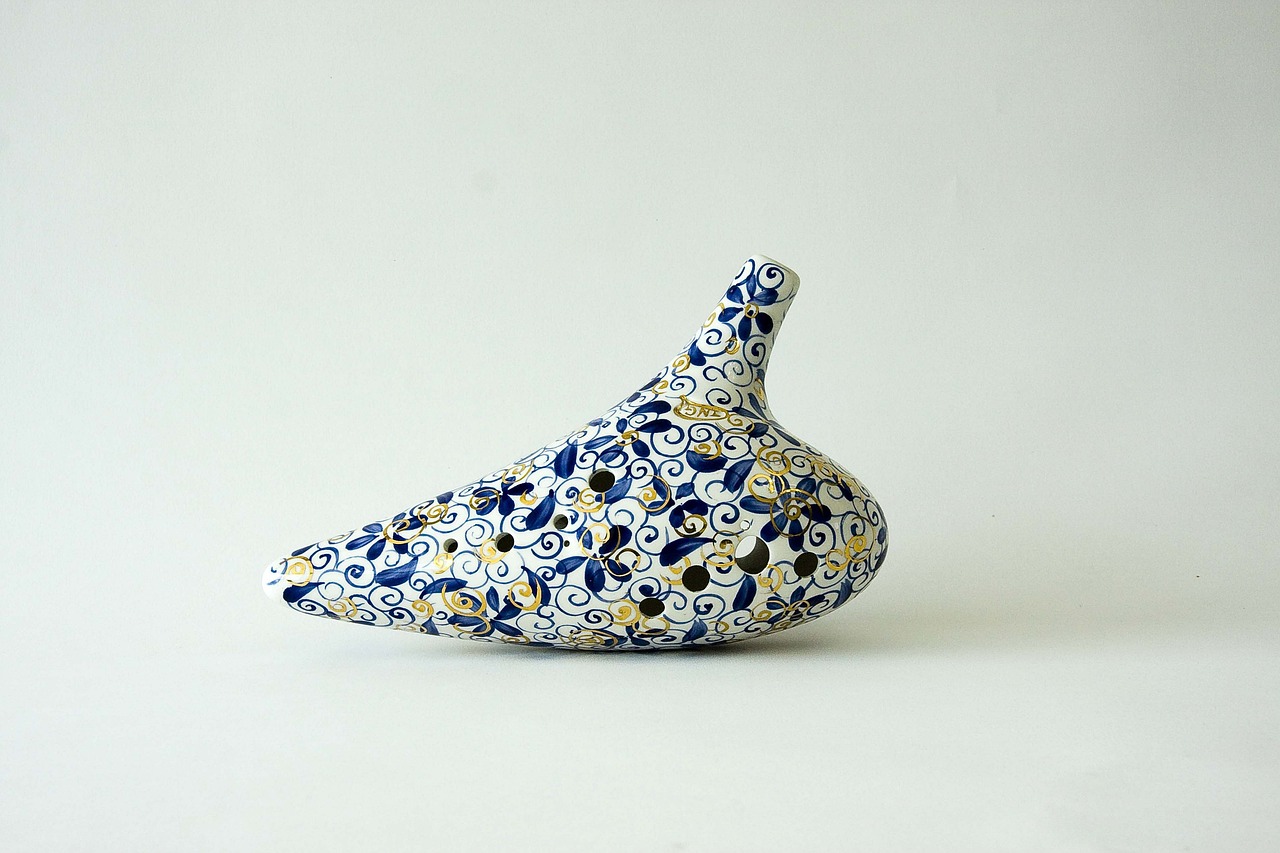
The Importance of Recycling Ceramics
In today's world, where environmental issues are becoming increasingly pressing, understanding the importance of recycling ceramics is more crucial than ever. With the rise of consumerism, the sheer volume of waste generated from discarded pottery and ceramics can be staggering. Just imagine: every year, millions of tons of ceramics end up in landfills, contributing to the growing problem of waste management. By recycling ceramics, we can significantly reduce this waste and promote a more sustainable future.
Recycling ceramics not only minimizes landfill use but also conserves natural resources. When we recycle, we are effectively giving these materials a second chance at life, rather than allowing them to sit idly in a dump. This process can lead to a reduction in the demand for new raw materials, which in turn lessens the environmental impact associated with mining and processing those materials. It's a win-win situation!
Moreover, recycling ceramics fosters a sense of community and encourages individuals to take action. When people see their peers engaging in sustainable practices, it can inspire them to do the same. This collective effort can lead to a significant cultural shift towards more environmentally friendly behaviors. For instance, community workshops focused on ceramic recycling can not only teach valuable skills but also bring people together, fostering connections and shared values around sustainability.
Another important aspect of recycling ceramics is its contribution to reducing carbon emissions. The production of new ceramics is energy-intensive, requiring high temperatures for firing. By recycling ceramics, we can lower the energy consumption associated with creating new products. This reduction in energy use translates to fewer greenhouse gas emissions, which is vital for combating climate change.
In summary, the importance of recycling ceramics extends beyond just waste reduction. It encompasses environmental conservation, community engagement, and the fight against climate change. By embracing recycling practices, we can breathe new life into old pottery and create a more sustainable world for future generations.
- What types of ceramics can be recycled? Most common ceramics, such as dishware, tiles, and pottery, can be recycled. However, items with metal or plastic components may not be suitable.
- How can I recycle my old ceramics? You can take them to local recycling centers that accept ceramics, or participate in community recycling programs.
- Can I reuse broken ceramics in my home? Absolutely! Broken ceramics can be creatively repurposed into beautiful mosaic art, garden decor, or even functional items like planters.
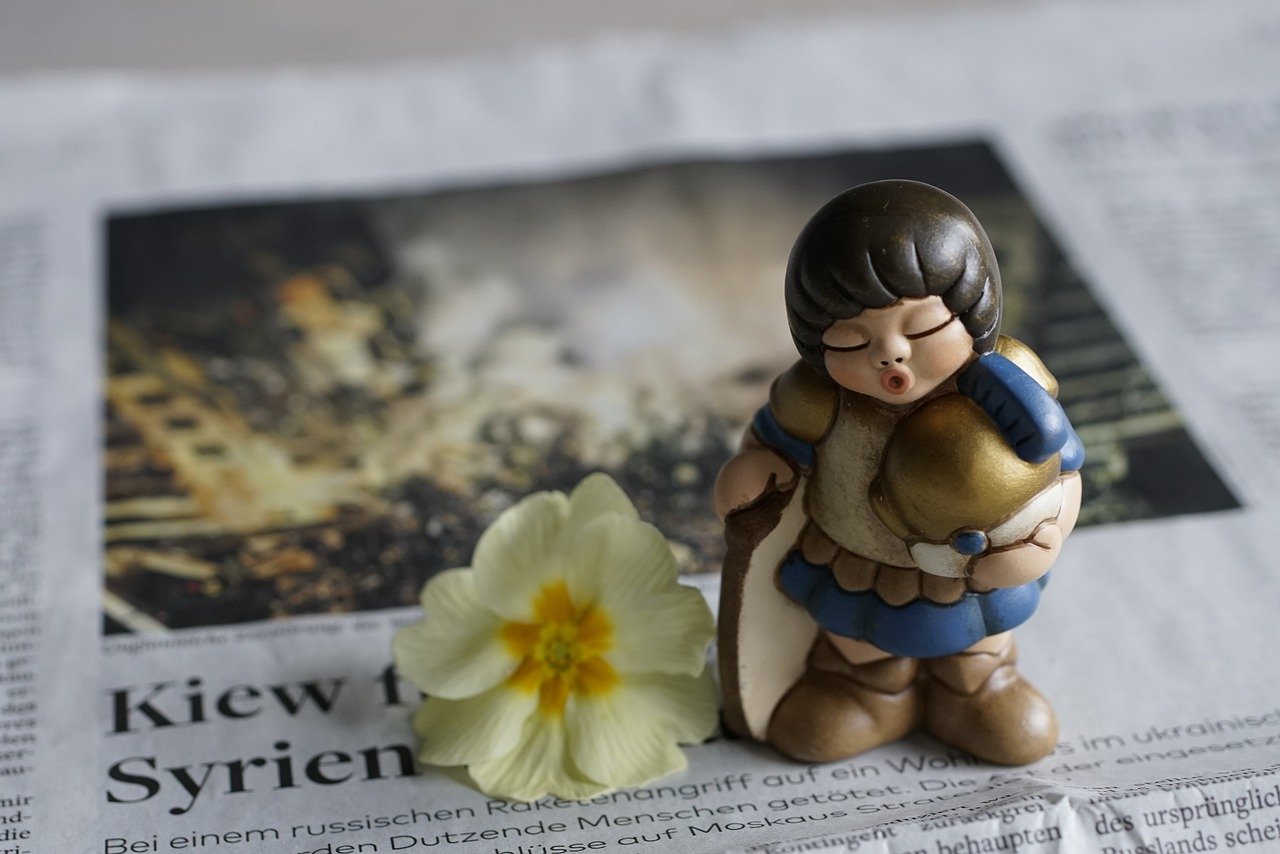
Techniques for Recycling Ceramics
When it comes to recycling ceramics, there’s a whole world of innovative techniques waiting to be explored. These methods not only help to minimize waste but also allow for creativity to flourish. Imagine taking something that was once considered trash and transforming it into a stunning piece of art or a functional item. It’s like giving old pottery a second chance at life! From crushing and repurposing to applying new glazes and finishes, each technique can be tailored to fit your artistic vision and project needs.
One of the most effective methods is crushing ceramics. This technique involves breaking down old pottery into smaller pieces, which can then be used in a variety of creative ways. For instance, crushed ceramics can be incorporated into mosaics, adding texture and a unique flair to your art. Think about it: every chip and crack tells a story, and when arranged thoughtfully, these fragments can create breathtaking visual displays. Not only does this method reduce waste, but it also allows artists to express their individuality through texture and color.
Another exciting application of crushed ceramics is in creating garden pathways or decorative elements. Imagine walking through a garden where the paths are lined with beautiful shards of pottery, glimmering in the sunlight. This sustainable approach not only enhances the aesthetic appeal of outdoor spaces but also promotes eco-friendly practices in landscaping and gardening. It’s a win-win situation: you’re beautifying your environment while also being kind to Mother Earth!
But let’s not stop there! Once you’ve repurposed your ceramics, you might want to rejuvenate their appearance with some glazing and finishing techniques. Applying new glazes can breathe fresh life into old pottery, allowing for personalization and creativity. Whether you opt for vibrant colors or subtle tones, the right glaze can transform a dull piece into a stunning centerpiece. This process not only maintains the charm of the original item but also gives it a modern twist, making it perfect for contemporary decor.
In summary, the techniques for recycling ceramics are as varied as they are exciting. By embracing methods like crushing, repurposing, and glazing, you can turn discarded pottery into something truly remarkable. Whether you’re an artist looking for inspiration or a DIY enthusiast wanting to reduce waste, these techniques offer endless possibilities. So, why not roll up your sleeves and start a project that not only showcases your creativity but also contributes to a more sustainable world?
- What types of ceramics can be recycled? Most types of ceramic materials, including porcelain, stoneware, and earthenware, can be recycled. However, avoid ceramics that are mixed with other materials, like glass or metal.
- Can I recycle ceramics at home? Yes! You can easily recycle ceramics at home through methods like crushing and creating art projects. Just ensure you have the right tools and safety gear.
- What are some easy projects to start with recycled ceramics? Start with simple projects like creating a mosaic, making a decorative planter, or even crafting unique coasters. These projects can be great for beginners!
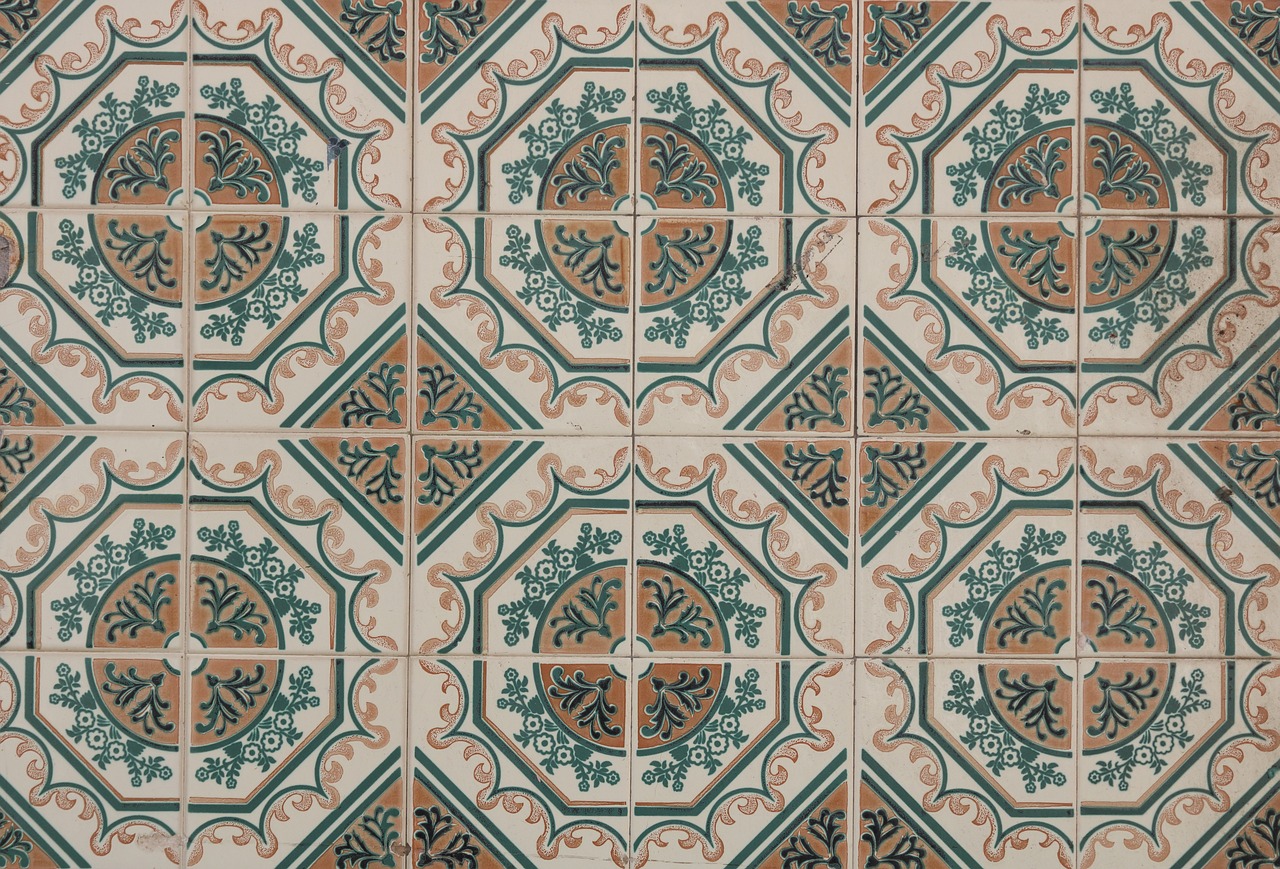
Crushing and Repurposing
When it comes to giving new life to old ceramics, one of the most effective methods is . This technique involves breaking down discarded pottery into smaller, manageable pieces that can be used in a variety of creative projects. Imagine transforming a once-beloved vase that has seen better days into a stunning mosaic or a unique garden pathway. Not only does this method significantly reduce waste, but it also opens up a world of artistic possibilities.
Crushing ceramics can be accomplished using a few simple tools, such as a hammer or a mortar and pestle. It's essential to wear safety goggles and gloves during the process to protect yourself from sharp edges. Once you have your crushed pieces, the real fun begins! These fragments can be incorporated into numerous projects, adding a touch of texture and character that new materials simply can't replicate.
One of the most popular applications of crushed ceramics is in mosaic art. By arranging these colorful shards into intricate designs, artists can create stunning visual displays that tell a story or evoke a particular emotion. Whether it's a vibrant mural on a garden wall or a decorative tabletop, the possibilities are endless. Not only does this method breathe new life into old pottery, but it also promotes sustainability by reducing the demand for new materials.
Additionally, crushed ceramics can be used in landscaping projects, such as creating garden pathways. Imagine walking along a path made of beautifully arranged ceramic pieces, each telling its own story while also serving a functional purpose. This sustainable approach not only enhances the aesthetic appeal of outdoor spaces but also encourages eco-friendly practices in gardening and landscaping.
To illustrate the benefits of crushing and repurposing ceramics, consider the following table that outlines some creative applications and their advantages:
| Application | Benefits |
|---|---|
| Mosaic Art | Transforms broken pieces into stunning visuals; encourages creativity |
| Garden Pathways | Enhances outdoor aesthetics; promotes eco-friendly practices |
| Decorative Planters | Provides a unique look; supports sustainable gardening |
In conclusion, crushing and repurposing ceramics is not just a practical solution for dealing with broken pottery; it’s an exciting opportunity to unleash your creativity. By embracing this technique, you can create beautiful, functional art pieces that not only serve a purpose but also tell a story of sustainability and innovation. So, the next time you find yourself with a broken ceramic piece, don’t toss it away. Instead, think of the endless possibilities that await!
- What tools do I need to crush ceramics? You can use a hammer or a mortar and pestle, along with safety goggles and gloves for protection.
- Can I use crushed ceramics in outdoor projects? Absolutely! Crushed ceramics are perfect for garden pathways, planters, and other outdoor decor.
- Is it safe to work with broken ceramics? Yes, as long as you take proper safety precautions, such as wearing gloves and goggles.

Creating Mosaic Art
Creating mosaic art from recycled ceramics is not just a craft; it's a form of storytelling. Imagine taking those broken, forgotten pieces of pottery and transforming them into something vibrant and full of life. This process allows artists to express their creativity while also making a statement about sustainability. The beauty of mosaic art lies in its versatility; it can range from small, intricate designs to large-scale installations that become the centerpiece of a garden or a community space.
To get started, you'll need a few essential materials. First, gather your broken ceramics—these can be anything from chipped plates to old tiles. Next, you'll require a strong adhesive, such as tile adhesive or glue specifically designed for ceramics. Additionally, a substrate, like a wooden board or a concrete base, will serve as the foundation for your mosaic. And, of course, don't forget your safety gear—gloves and goggles are a must when working with sharp pieces!
Once you have your materials, the fun begins. Start by arranging the ceramic pieces on your substrate without gluing them down initially. This step allows you to play around with different layouts and designs. You might find that certain colors or patterns speak to you more than others, and that’s perfectly okay! Take your time to find a composition that resonates with your artistic vision. Once you’re satisfied with the arrangement, it’s time to glue everything down.
After the adhesive has dried, you can enhance your mosaic by applying grout. This not only fills in the gaps between the ceramic pieces but also adds a polished finish to your artwork. You can choose from a variety of grout colors to complement your design. Once the grout is applied, wipe away any excess with a damp sponge, revealing the beautiful textures and colors of your recycled ceramics.
Finally, consider sealing your mosaic art, especially if it will be displayed outdoors. A good sealant will protect your creation from the elements and ensure it stands the test of time. Now, you have a stunning piece of art that not only beautifies your space but also embodies the spirit of recycling and creativity!
For those looking to dive deeper into the world of mosaic art, there are countless resources available, including online tutorials and local workshops. Joining a community of fellow artists can also provide inspiration and support as you embark on your creative journey. So, why wait? Gather those old ceramics and start creating something beautiful today!
- What types of ceramics can be used for mosaics? Almost any type of ceramic can be used, including plates, cups, tiles, and even broken pottery.
- Do I need special tools to create mosaic art? While basic tools like scissors and a spatula can help, the most important tools are your creativity and patience!
- Can mosaic art be displayed outdoors? Yes, but it’s important to use weather-resistant materials and sealants to protect your artwork from the elements.
- How can I learn more about mosaic art? There are numerous online resources, books, and local classes that can help you get started.
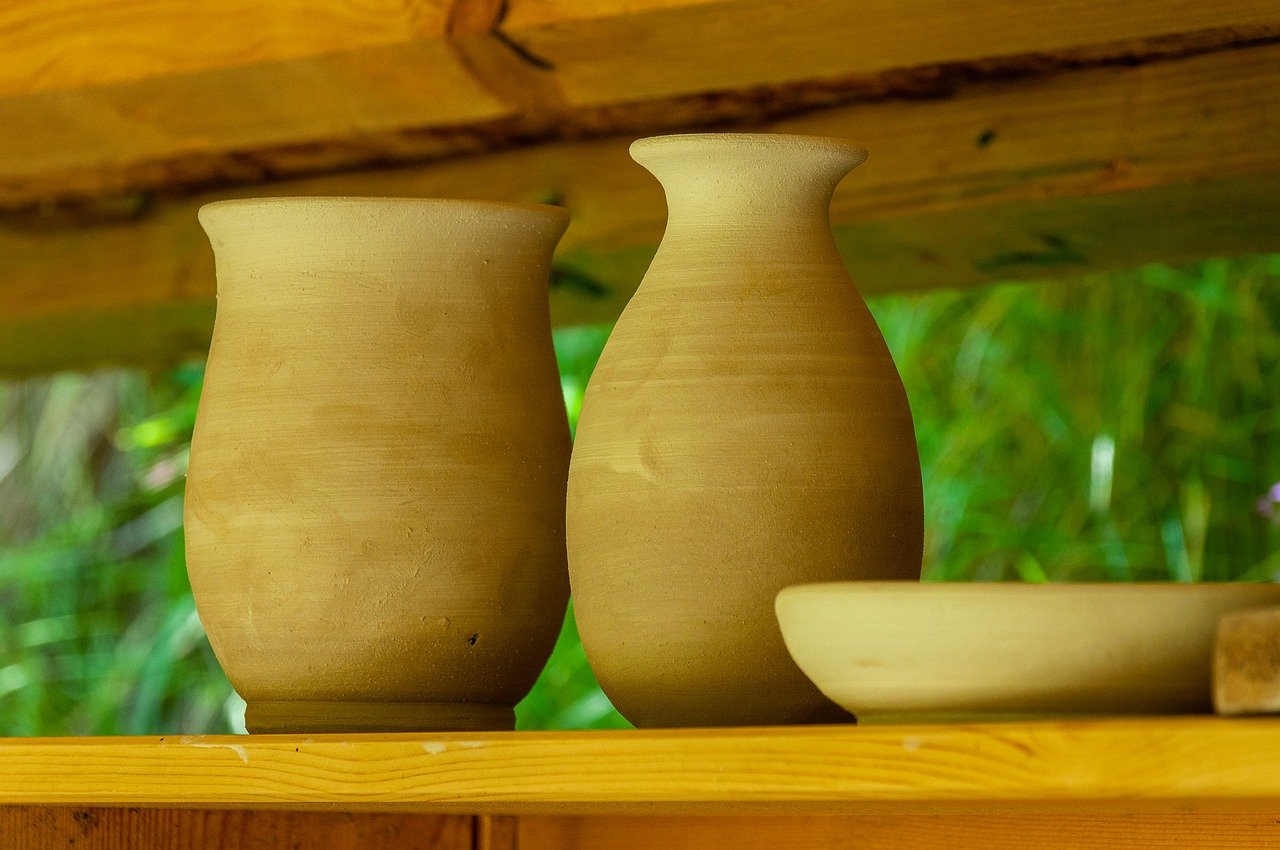
Garden Pathways and Decor
When it comes to enhancing your outdoor spaces, recycled ceramics can play a pivotal role in creating unique and stunning garden pathways and decor. Imagine walking through your garden and being greeted by a pathway that not only serves a functional purpose but also tells a story of creativity and sustainability. By using crushed ceramics, you can craft a visually appealing surface that is both durable and eco-friendly. This method allows you to repurpose old pottery, transforming it into something beautiful and practical.
One of the most exciting aspects of using recycled ceramics in your garden is the variety of textures and colors you can incorporate. The crushed pieces can range from vibrant hues to muted tones, allowing you to design a pathway that complements your garden's aesthetic. You can mix different types of ceramics, including plates, tiles, and cups, to create a mosaic effect that adds character and charm. This approach not only reduces waste but also gives your garden a personalized touch that reflects your style.
Furthermore, creating garden decor with recycled ceramics can be a fun and rewarding project. Think about crafting decorative borders, unique flower pots, or even artistic sculptures that can serve as focal points in your garden. The possibilities are endless! For instance, you could use larger shards to create a stunning birdbath or smaller pieces to embellish planters. Each item not only enhances the beauty of your outdoor space but also serves as a conversation starter, showcasing your commitment to sustainability.
In addition to aesthetics, using recycled ceramics in your garden can also promote environmental awareness. By choosing to incorporate these materials, you are actively participating in the reduction of landfill waste and encouraging others to consider similar practices. It’s like giving a second life to items that would otherwise be discarded. As you walk along your ceramic pathway, you can take pride in knowing that you’ve made a positive impact on the environment.
To sum it up, utilizing recycled ceramics for garden pathways and decor is a fantastic way to merge creativity with sustainability. Whether you're a seasoned gardener or just starting, this approach allows you to express your artistic side while contributing to a healthier planet. So, why not roll up your sleeves and start your next garden project? Your outdoor space is waiting for a touch of recycled charm!
- What types of ceramics can be recycled for garden projects? Almost any type of ceramic can be repurposed, including broken plates, tiles, and pottery. Just ensure they are clean and free from any hazardous materials.
- How do I prepare ceramics for use in my garden? Begin by crushing the ceramics into smaller pieces using a hammer or a mortar and pestle. Wear safety goggles to protect your eyes from flying shards.
- Can I use recycled ceramics for functional garden items? Absolutely! Recycled ceramics can be transformed into functional items such as planters, birdbaths, and decorative borders.
- Is it safe to use broken ceramics in my garden? Yes, as long as you ensure there are no sharp edges exposed that could cause injury. It's advisable to smooth out any rough edges after crushing.
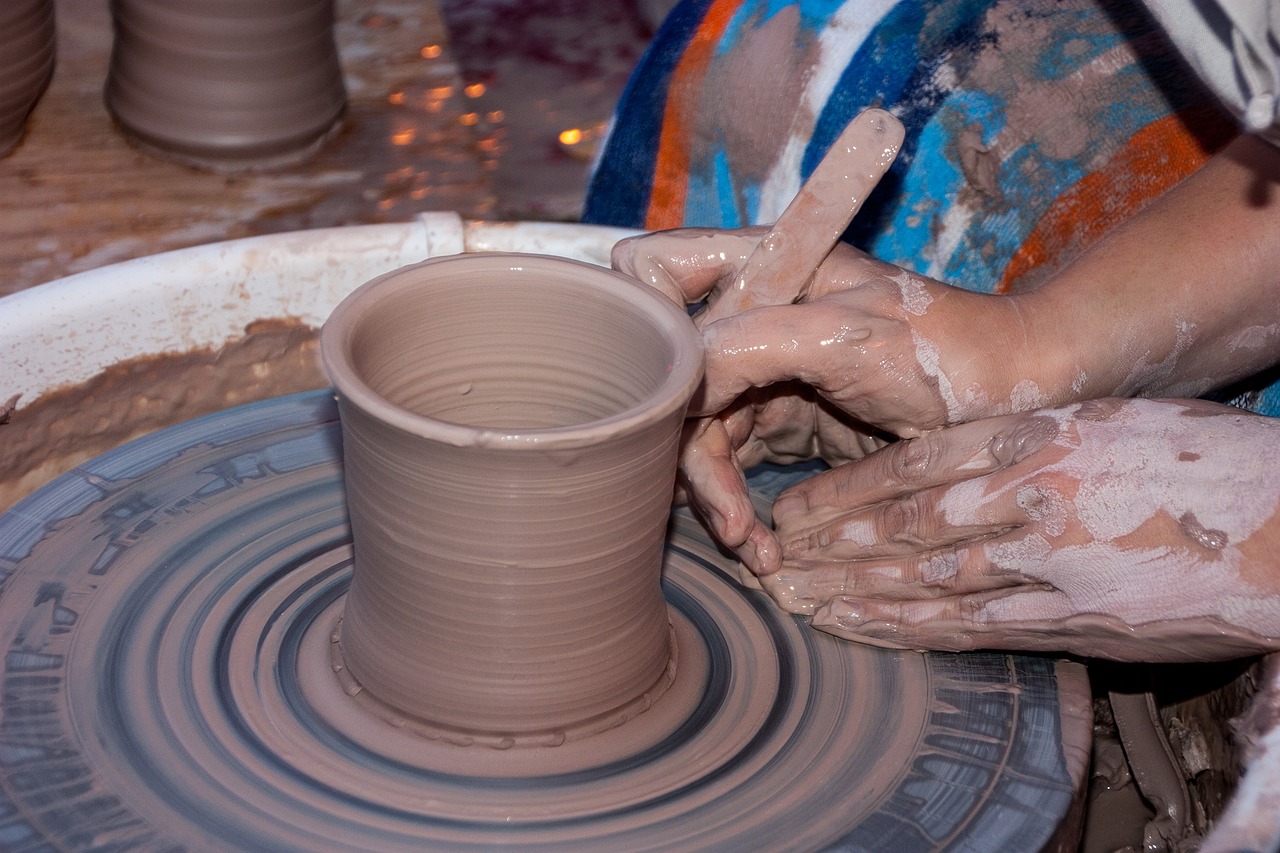
Glazing and Finishing Techniques
When it comes to breathing new life into old ceramics, play a pivotal role. These methods not only enhance the aesthetic appeal of the pottery but also protect it, making it more durable and functional. Imagine transforming a dull, chipped vase into a vibrant centerpiece that draws the eye of every guest. This transformation is possible through the careful application of glazes and finishes, which can be tailored to suit any style or preference.
One popular technique is the use of underglazes, which allow for intricate designs and patterns to be painted onto the surface before a clear glaze is applied. This method provides a rich depth of color and can create stunning visual effects. Additionally, artists can experiment with layering different glazes to achieve unique textures and finishes. For instance, a glossy finish can add a modern touch, while a matte finish might evoke a rustic charm.
Another exciting approach is the incorporation of natural materials into the glazing process. Some artisans use ash from wood fires or even crushed minerals to create glazes that reflect the beauty of nature. This not only promotes sustainability by utilizing natural resources but also results in one-of-a-kind pieces that tell a story.
In addition to glazes, finishing techniques such as wax resist can be employed to create contrast and highlight specific areas of a piece. This method involves applying wax to areas that should remain unglazed, allowing for a striking interplay between the glazed and unglazed surfaces. The result is a dynamic visual experience that adds character to the pottery.
For those interested in the technical side, understanding the firing process is crucial. Different glazes require specific firing temperatures, and the type of kiln used can significantly impact the final outcome. Artists often experiment with various firing techniques, such as reduction firing or sagger firing, to achieve distinct effects. Each firing method can alter the colors and textures of the glaze, leading to surprising and beautiful results.
Ultimately, the key to successful glazing and finishing lies in experimentation and creativity. By embracing these techniques, artists can not only revitalize old ceramics but also push the boundaries of their craft. So, the next time you come across a piece of old pottery, consider the transformative power of glazing and finishing—it might just become your new favorite work of art!
- What types of glazes are best for recycled ceramics?
There are many types of glazes, including glossy, matte, and underglazes. The best choice depends on the desired finish and the pottery's intended use.
- Can I use regular paint for finishing ceramics?
Regular paint is not recommended for ceramics as it may not withstand the heat of firing. Always use ceramics-specific glazes.
- How do I achieve different textures with glazes?
Experimenting with layering different glazes, using additives like sand or ash, and varying the firing temperatures can create unique textures.
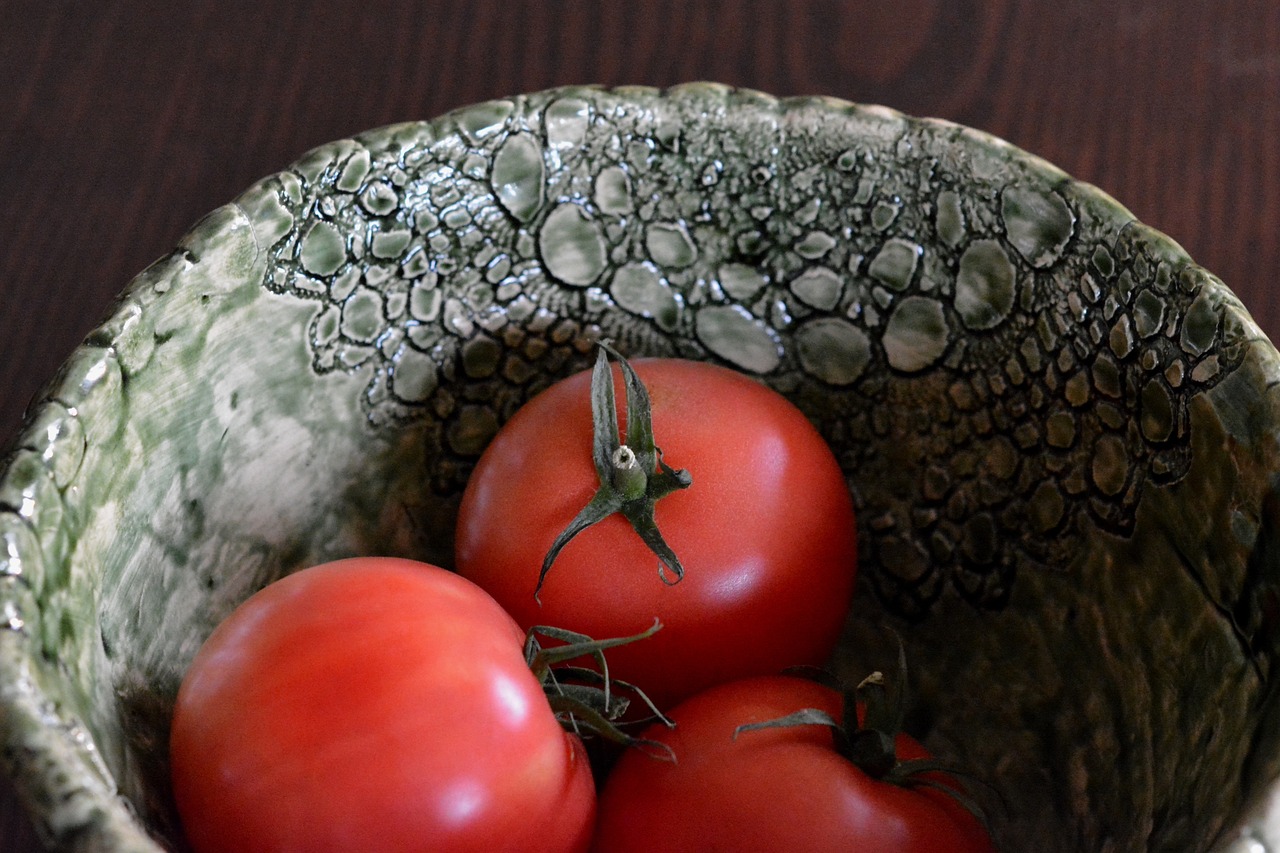
Creative Projects with Recycled Ceramics
When it comes to recycling ceramics, the possibilities are truly endless! Imagine taking those old, chipped plates or cracked pots and transforming them into something spectacular. It's not just about saving the environment; it's about unleashing your creativity and giving new life to discarded items. Whether you're a DIY enthusiast or just looking for a fun weekend project, there are countless ways to repurpose ceramics that are both functional and artistic.
One of the most popular and rewarding projects is creating functional home decor. Think about it: a beautiful, handcrafted vase made from a broken teapot or a unique bowl created from mismatched plates. These items not only serve a practical purpose but also tell a story of transformation and sustainability. Not to mention, they add a personal touch to your home that you won’t find in mass-produced decor. Imagine a centerpiece on your dining table that sparks conversations, showcasing your creativity and commitment to the planet.
But it doesn’t stop there! Artistic sculptures and installations can also emerge from the remnants of old ceramics. Artists are increasingly using recycled materials to create striking pieces that capture attention and provoke thought. For instance, a large outdoor installation made entirely from shattered tiles can become a focal point in a park, inviting viewers to reflect on waste and sustainability. These works often serve a dual purpose: they beautify public spaces while raising awareness about the importance of recycling. It’s a win-win!
Now, let’s not forget about the community aspect of these projects. Organizing workshops where people can come together to create art from recycled ceramics is a fantastic way to build connections. Participants can share ideas, techniques, and even their own stories about the pieces they’re working on. Imagine a community garden adorned with mosaic stepping stones made from everyone’s old ceramics, each piece uniquely contributing to a collective artwork. It’s not just about the end product; it’s about the journey and the connections made along the way.
As you dive into the world of recycled ceramics, consider some of these project ideas:
- Creating garden markers from broken pots
- Making a birdbath from a large dish and a pedestal
- Designing wall art using colorful shards
- Building a fire pit surround with crushed tiles
Each of these projects not only showcases your creativity but also highlights the beauty of sustainability. So, gather those old ceramics, roll up your sleeves, and let your imagination run wild! You’ll be amazed at how a little creativity can turn waste into wonderful works of art.
Q: What types of ceramics can be recycled?
A: Most ceramics can be recycled, including plates, bowls, mugs, and tiles. Just ensure they are not contaminated with food or other materials.
Q: Do I need special tools to recycle ceramics?
A: Basic tools like safety goggles, gloves, and a hammer for crushing pieces are often sufficient. For more intricate projects, additional crafting tools may be helpful.
Q: Can I sell items made from recycled ceramics?
A: Absolutely! Many people appreciate handmade items that promote sustainability, so consider setting up an online shop or participating in local craft fairs.
Q: How can I find inspiration for my projects?
A: Look online for tutorials, join crafting groups, or visit local art galleries to see what other artists are creating with recycled materials.
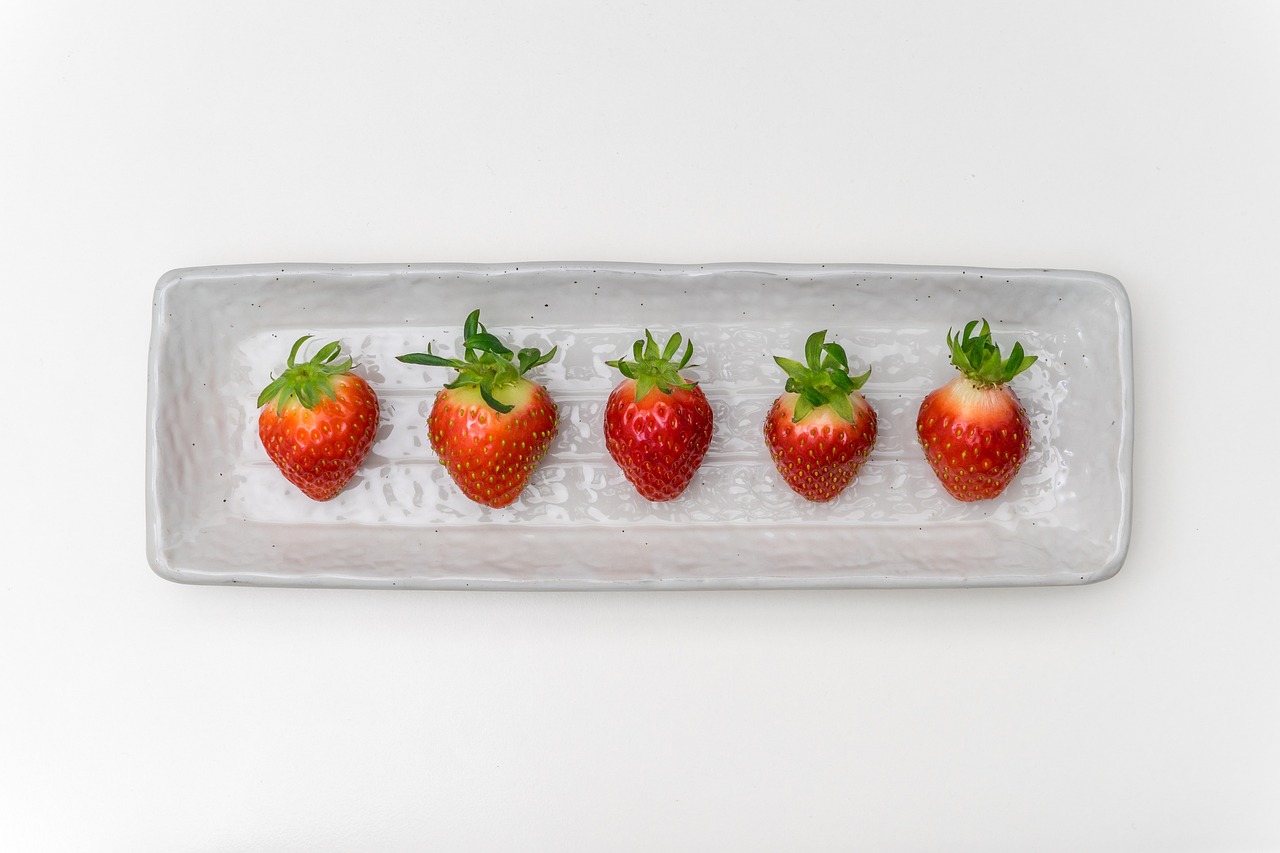
Functional Home Decor
Recycling ceramics into items is not just a trend; it’s a way to infuse your living space with personality and sustainability. Imagine transforming a chipped plate into a stunning wall clock or a cracked vase into a stylish planter. These projects not only breathe new life into old pottery but also serve a practical purpose, making your home uniquely yours.
One of the most appealing aspects of using recycled ceramics for decor is the versatility it offers. You can create a variety of items that enhance your home’s aesthetic while being environmentally conscious. For instance, consider the following ideas:
- Planters: Broken pots can be repurposed into charming planters for your indoor or outdoor garden. Their irregular shapes add character, and you can even paint them for a pop of color.
- Bowls: Old ceramic bowls can be refurbished and used for serving snacks or as decorative pieces on your coffee table. Imagine a vibrant, hand-painted bowl filled with fresh fruits or colorful candies.
- Coasters: Small ceramic tiles can easily be transformed into coasters. Just add a protective layer on the bottom, and you have a functional piece that protects your surfaces while showcasing beautiful designs.
Moreover, incorporating these recycled items into your home decor can spark conversations. Each piece tells a story, reminding us of the value of sustainability. When guests admire your unique decor, you have the perfect opportunity to share your passion for recycling and the creative process behind each item.
Another fantastic aspect of creating functional home decor from ceramics is the chance to personalize your space. You can choose colors, patterns, and designs that resonate with your style. This not only enhances the beauty of your home but also creates an inviting atmosphere. Whether you’re hosting a dinner party or enjoying a quiet evening at home, your decor will reflect your personality and values.
In addition to the aesthetic appeal, using recycled ceramics can also be cost-effective. Instead of purchasing new decor items that often come with a hefty price tag, diving into your collection of old pottery can yield beautiful results without breaking the bank. Plus, you get the satisfaction of knowing you’re contributing to a more sustainable future.
To sum it up, recycling ceramics into functional home decor is a creative and rewarding endeavor. It allows you to express your individuality, promote sustainability, and create beautiful, practical items that enhance your living space. So next time you come across an old piece of pottery, consider the endless possibilities that await when you give it a new purpose!
Q: What types of ceramics can be recycled?
A: Almost any type of ceramic can be recycled, including plates, bowls, vases, and tiles. Just ensure they are not contaminated with non-ceramic materials.
Q: How can I ensure the safety of using recycled ceramics in my home?
A: When repurposing ceramics, make sure to clean them thoroughly and check for any sharp edges. If you're creating items like food containers, use food-safe glazes.
Q: Where can I find old ceramics to recycle?
A: Look in thrift stores, garage sales, or even your own kitchen! Friends and family might also have old pottery they’re willing to part with.
Q: Can I sell items made from recycled ceramics?
A: Absolutely! Many people appreciate unique, handcrafted items, especially those that are eco-friendly. Consider setting up an online shop or participating in local craft fairs.
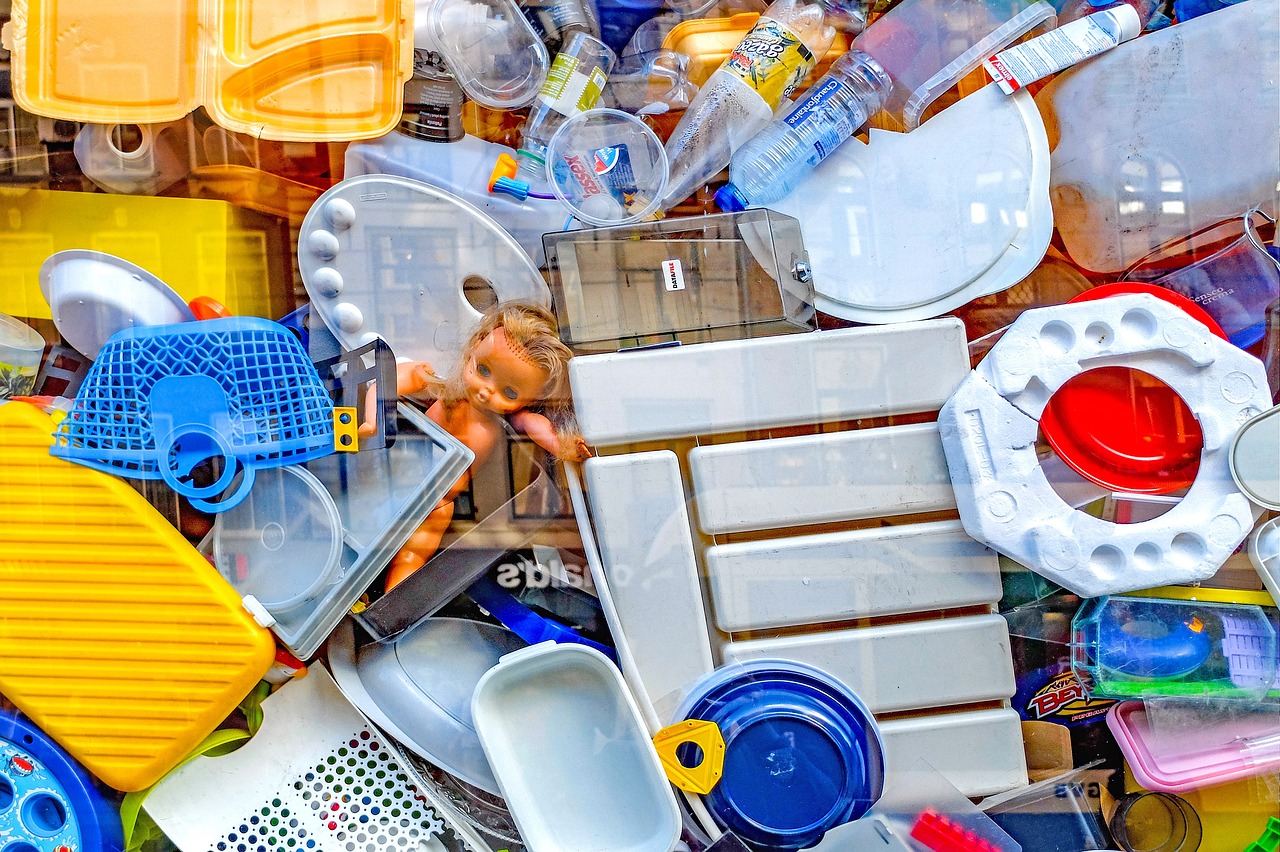
Artistic Sculptures and Installations
When it comes to transforming recycled ceramics into artistic sculptures and installations, the possibilities are as vast as the imagination itself. Artists around the world are embracing the challenge of using discarded pottery to create stunning pieces that not only serve as visual focal points but also convey powerful messages about sustainability and waste reduction. Just think about it: a broken plate, once destined for the landfill, can be reborn as a breathtaking sculpture that tells a story of renewal and creativity.
One of the most exciting aspects of working with recycled ceramics is the unique textures and colors that each piece brings to the table. Imagine a sculpture made from shattered teacups, their delicate patterns merging to form a vibrant mosaic. This kind of work not only highlights the beauty of the individual pieces but also emphasizes the idea that beauty can arise from what is often considered trash. Artists can utilize various techniques, such as stacking, layering, or even embedding ceramics into larger structures, to create eye-catching installations that invite viewers to engage and reflect.
Moreover, artistic sculptures made from recycled ceramics can serve as a conversation starter. They challenge our perceptions of waste and encourage us to think critically about our consumption habits. In public spaces, these installations can spark discussions on environmental issues, making art a powerful tool for advocacy. For instance, a large-scale piece in a park might incorporate broken tiles and pottery, drawing attention to the importance of recycling and the impact of human activity on our planet.
To illustrate the variety of artistic approaches, here are a few notable examples of how artists are using recycled ceramics:
- Community Projects: Local artists often collaborate with communities to create large installations that reflect cultural heritage, using ceramics that hold historical significance.
- Interactive Art: Some artists design sculptures that invite viewer interaction, allowing people to touch and rearrange pieces, thus creating a dynamic experience.
- Functional Art: Blending aesthetics with utility, artists craft sculptures that serve a purpose, such as benches or garden features, proving that art can be both beautiful and functional.
As we explore the realm of artistic sculptures and installations, it becomes clear that the act of recycling ceramics is not just about reducing waste; it's about redefining what art can be. Every chipped cup, broken vase, or discarded tile has the potential to contribute to a larger narrative. In a world where we often feel overwhelmed by the sheer volume of waste we produce, these artistic endeavors remind us that creativity can flourish even from the remnants of our past. Whether in a gallery, a park, or a public square, recycled ceramic art has the power to inspire, educate, and provoke thought, making it a vital part of the conversation on sustainability.
Q: What types of ceramics can be recycled for artistic projects?
A: Almost any type of ceramic can be recycled, including pottery, tiles, dishes, and porcelain. Just make sure they are clean and free from any toxic materials.
Q: How can I start my own ceramic recycling project?
A: Begin by collecting broken ceramics, then explore different techniques such as mosaics or sculptures. You can find many tutorials online to guide you through the process.
Q: Are there any specific tools needed for working with recycled ceramics?
A: Basic tools like tile cutters, adhesive, and safety gear are essential. Depending on your project, you may also need additional materials like grout or paint.
Q: Can I sell my recycled ceramic art?
A: Absolutely! Many artists sell their work at local markets, galleries, or online platforms. Just ensure you follow any local regulations regarding selling art.
Frequently Asked Questions
- What are the benefits of recycling ceramics?
Recycling ceramics helps reduce waste, conserves natural resources, and promotes environmental sustainability. By repurposing old pottery, we minimize landfill use and give new life to materials that would otherwise be discarded.
- What techniques can I use to recycle ceramics?
There are several innovative techniques for recycling ceramics, including crushing old pieces for mosaics, applying new glazes, and creating functional items like planters or bowls. Each method allows for creativity and personalization, making it easy to transform discarded pottery into something beautiful.
- Can I use crushed ceramics in my garden?
Absolutely! Crushed ceramics can be used in garden pathways, as decorative elements, or even in potting soil to improve drainage. This not only enhances the visual appeal of your outdoor space but also promotes eco-friendly gardening practices.
- How can I create mosaic art from old ceramics?
To create mosaic art, start by breaking your old ceramics into smaller pieces. Then, arrange these pieces into a desired pattern on a surface, using adhesive to hold them in place. Once set, you can grout the gaps for a polished finish, turning discarded pottery into stunning artwork.
- What types of projects can I make with recycled ceramics?
The possibilities are endless! You can make functional home decor items like vases and bowls, or artistic sculptures and installations. Each project allows you to express your creativity while also raising awareness about the importance of recycling.
- Are there any special tools needed for recycling ceramics?
While you don’t need extensive tools, having a tile cutter or hammer for breaking ceramics, adhesive for attaching pieces, and grout for finishing mosaics can be very helpful. Basic crafting supplies like paint and brushes can also enhance your projects.
- Is it safe to handle broken ceramics?
Yes, but caution is key! Always wear gloves when handling broken ceramics to protect your hands from sharp edges. It's also a good idea to work in a well-ventilated area if you're using adhesives or glazes.



















